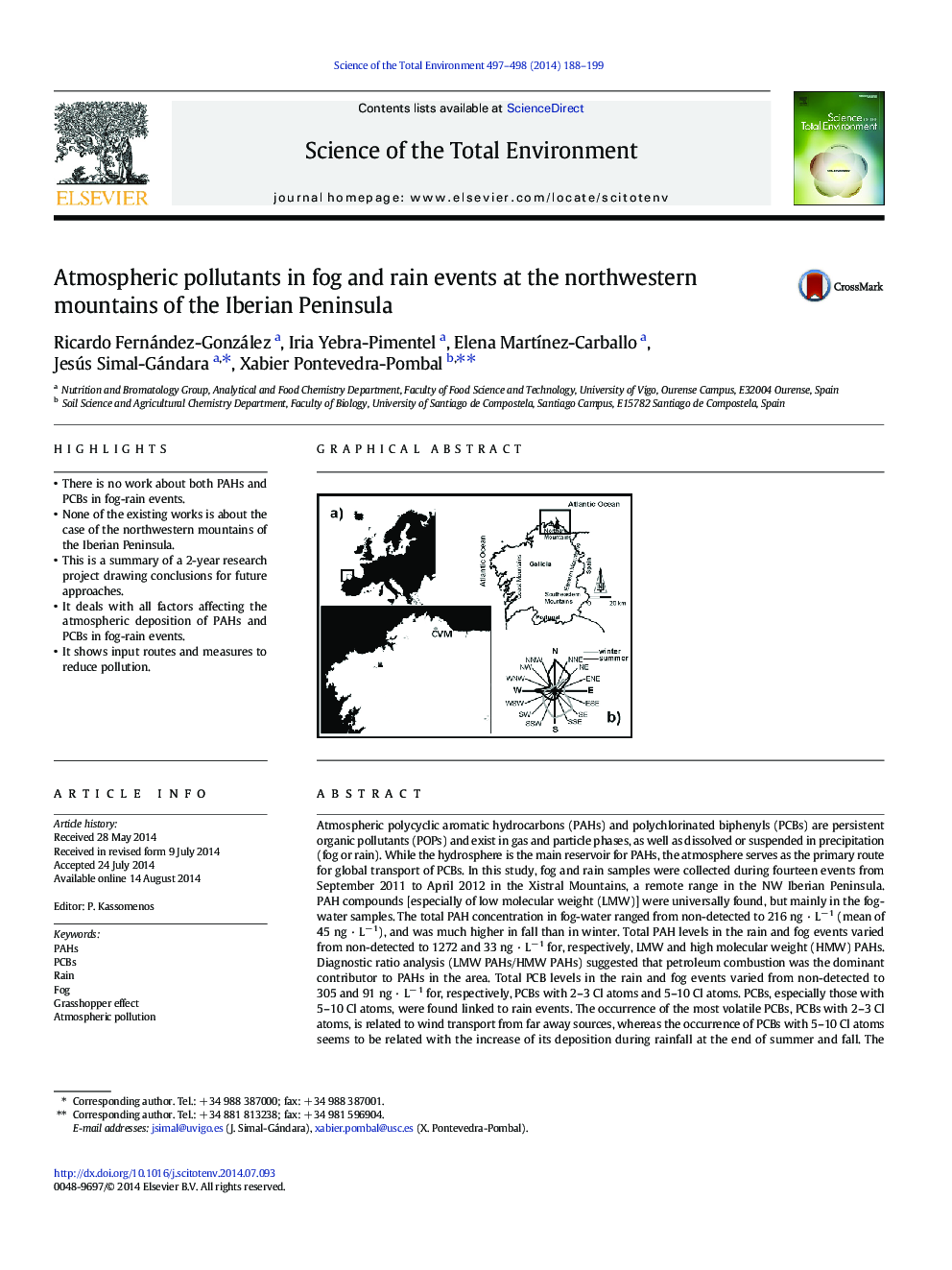| کد مقاله | کد نشریه | سال انتشار | مقاله انگلیسی | نسخه تمام متن |
|---|---|---|---|---|
| 6328640 | 1619775 | 2014 | 12 صفحه PDF | دانلود رایگان |
- There is no work about both PAHs and PCBs in fog-rain events.
- None of the existing works is about the case of the northwestern mountains of the Iberian Peninsula.
- This is a summary of a 2-year research project drawing conclusions for future approaches.
- It deals with all factors affecting the atmospheric deposition of PAHs and PCBs in fog-rain events.
- It shows input routes and measures to reduce pollution.
Atmospheric polycyclic aromatic hydrocarbons (PAHs) and polychlorinated biphenyls (PCBs) are persistent organic pollutants (POPs) and exist in gas and particle phases, as well as dissolved or suspended in precipitation (fog or rain). While the hydrosphere is the main reservoir for PAHs, the atmosphere serves as the primary route for global transport of PCBs. In this study, fog and rain samples were collected during fourteen events from September 2011 to April 2012 in the Xistral Mountains, a remote range in the NW Iberian Peninsula. PAH compounds [especially of low molecular weight (LMW)] were universally found, but mainly in the fog-water samples. The total PAH concentration in fog-water ranged from non-detected to 216 ng · Lâ 1 (mean of 45 ng · Lâ 1), and was much higher in fall than in winter. Total PAH levels in the rain and fog events varied from non-detected to 1272 and 33 ng · Lâ 1 for, respectively, LMW and high molecular weight (HMW) PAHs. Diagnostic ratio analysis (LMW PAHs/HMW PAHs) suggested that petroleum combustion was the dominant contributor to PAHs in the area. Total PCB levels in the rain and fog events varied from non-detected to 305 and 91 ng · Lâ 1 for, respectively, PCBs with 2-3 Cl atoms and 5-10 Cl atoms. PCBs, especially those with 5-10 Cl atoms, were found linked to rain events. The occurrence of the most volatile PCBs, PCBs with 2-3 Cl atoms, is related to wind transport from far away sources, whereas the occurrence of PCBs with 5-10 Cl atoms seems to be related with the increase of its deposition during rainfall at the end of summer and fall. The movement of this fraction of PCBs is facilitated by its binding to air-suspended particles, whose concentrations usually show an increase as the result of a prolonged period of drought in summer.
152
Journal: Science of The Total Environment - Volumes 497â498, 1 November 2014, Pages 188-199
